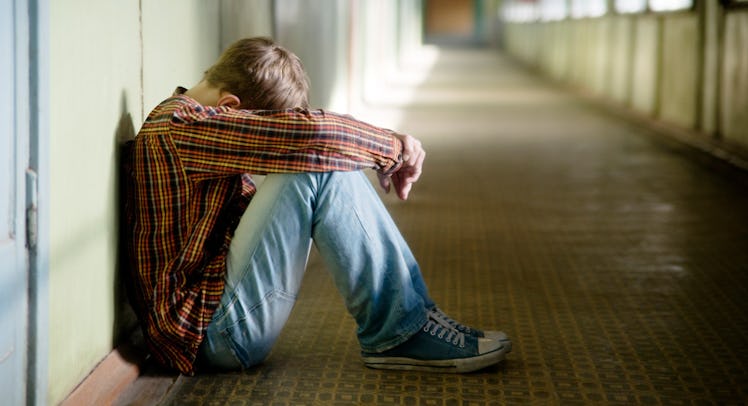Peer Rejection Isn’t the Culprit Behind School Shootings
Being rejected is a problem. It's not what causes students to kill.

Whenever a school shooting takes place, the focus often turns to the social life of the shooters, and people conclude that they suffered from some type of peer rejection or victimization.
For example, in the latest school shooting, reports have surfaced that Dimitrios Pagourtzis, the 17-year old school shooter in Santa Fe, Texas, may have experienced a form of peer rejection. Specifically, in the weeks prior to the shooting, one of his victims, Shana Fisher, publicly rejected his romantic advances in front of peers.
The well-known narrative that links school shootings and peer rejection has led to much soul-searching about whether school shootings could be prevented if peers were simply nicer or school climate were improved. But is the answer really this simple?
This article was originally published on The Conversation. Read the original article by Jennifer Watling Neal, Associate Professor, Michigan State University.
Peer Rejection Is a Problem
Peer rejection refers to a range of problems that include being disliked and victimized by or isolated from peers. Developmental psychologists have amassed decades of research on peer rejection and its consequences. Those consequences include depression, loneliness, aggressive behaviors and academic problems.
Also, there is some evidence that peer rejection might lead to a vicious cycle in which kids who are rejected by peers exhibit problematic behaviors like aggression, which in turn lead to even more peer rejection.
All this is to say that peer rejection is linked to some negative outcomes in kids and it is important to prevent it. However, there are a couple of reasons why peer rejection is likely not the culprit behind school shootings.
A False Link?
First, as many who have experienced the pains of growing up can verify, peer rejection is a relatively common experience. It is not unusual for developmental studies to find that close to 25 percent of kids have experienced it at some point. Despite the commonality of peer rejection, school shootings in the U.S. are still rare occurrences. And even though it may not seem like it, school shootings have been mostly declining since the 1990s.
Additionally, peer rejection is a recognized problem that is studied across countries, including Canada, Netherlands and China. The numbers of school shootings in these countries are negligible to non-existent. If peer rejection really was the culprit for school shootings, school shootings would be more common both in the U.S. and around the world.
Second, claims of peer rejection among school shooters are often contested. For example, a book on the Columbine school shooting claimed that the shooters were not bullied and isolated as initially described immediately following the event. Likewise, although Parkland shooter, Nikolas Cruz, was described as isolated, reports of classmates suggest that they tried to befriend him. In a more systematic attempt to link the phenomenon of school shootings with peer rejection, researchers conducted a case study of 15 U.S.-based school shootings. Although they found that shooters experienced some form of peer rejection in over 85 percent of the cases, this was accompanied by a range of additional risk factors. Those risk factors included a fascination with guns and psychological problems like depression. Therefore, while peer rejection might be common among shooters, it is not sufficient in itself to cause school shootings.
A More Complex Explanation
In reality, the cause of school shootings is likely far more complex than a simple case of a shooter being rejected by peers. Specifically, while peer rejection might be part of the profile of many school shooters, it is important to think about the range of environmental and individual factors that might contribute to school shootings.
Ecological frameworks offer a promising approach for highlighting the factors at these multiple levels that might be related to school shootings.
First, at the individual level, it is important to consider risk factors for school shootings. Those risk factors include things like depression and prior antisocial behavior.
Next, it is important to consider the immediate environments that surround school shooters and their interactions. It is here where peer rejection comes into play – but relationships with teachers, family members, and the broader community are also critical.
Finally, it is important to consider local, state and federal policies that influence the availability of firearms, as well as broad cultural attitudes toward the use of firearms. It is likely that these factors help explain school shootings. For this reason, any solution to school shootings must involve an approach that takes a range of factors at multiple levels into account.
This article was originally published on